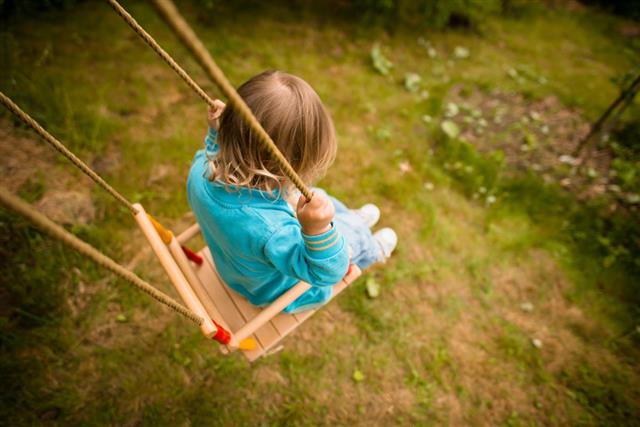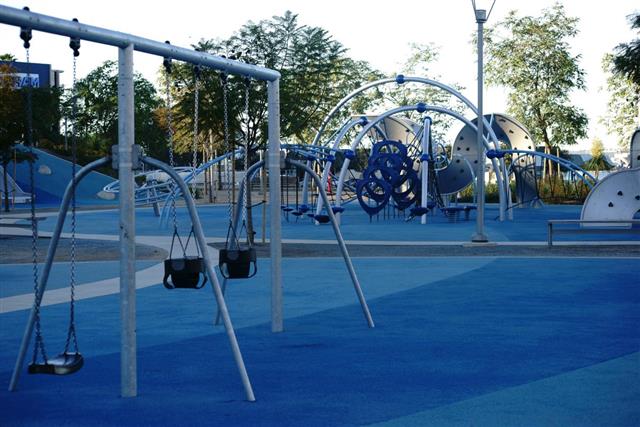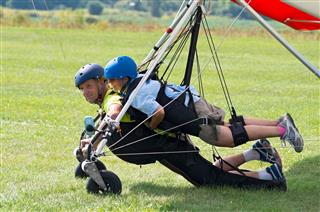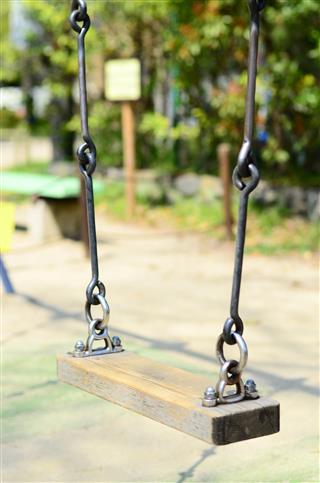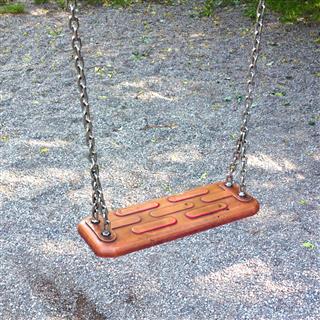
A well-designed, well-equipped playground can provide children with hours of fun and physical activity. However, it’s important to ensure that it is a safe place to play in, so as to ensure the safety of your child.
By Deborah Lambeth
There have been numerous studies about children’s playground injuries, that detail statistics and information critical to developing preventive measures that can be put in place to reduce these injuries. It is not a new scenario for children to go to the emergency room for treatment of these injuries, which range from bad cuts and bruises to broken bones and head injuries. Most of these injuries happen on public playgrounds. Although these are regulated by government agencies and should be the safest of all, that isn’t always the case. So before letting your child play on any playground, be sure to give it a once-over to be sure it’s safe.
Be Sure To Cushion Falls Appropriately
Playground surface materials play a primary role in it safety because, for children, falling is an inherent part of rough-and-tumble play. Children can fall because they slip, lose their grip, or lose their balance while playing on monkey bars, swings, slides, merry-go-rounds, and seesaws. Harder the surface a child lands on, the more likely a severe injury will result. Asphalt or concrete (hard surfacing materials) are unsuitable for use under and around the equipment.
As they have poor shock-absorbing properties, soils and hard-packed dirt are also not recommended. Similarly, grass and turf are not recommended because these surfaces wear down eventually, and don’t provide enough protection from scrapes, cuts, and bruises, or more serious injuries. Acceptable surfacing materials are available in two basic types, unitary or loose-fill.
Rubber mats, or a combination of rubber-like materials are considered unitary surfaces because they are held in place by a binder that may be poured in place at the ground site, and then cured to form a unitary shock-absorbing surface. Loose-fill materials such as sand, gravel, shredded wood products, and shredded tires can also have acceptable shock-absorbing properties, as long as they are installed and maintained at a sufficient depth.
Be Sure the Equipment Is Designed Well and Installed Correctly
The design, arrangement, and installation of the equipment can also contribute to injuries, particularly with young children. Most accidents involve “old-fashioned” grounds with metal swings and monkey bars, asphalt or concrete surfaces, and play areas that are shared by children of varying ages. Most have equipment and play areas that are essentially stages where accidents are waiting to happen.
Often, children are hurt not only by the fall, but by being struck by the equipment as they fall. The more modern and considerably safer grounds with cushioned mats and other soft surfaces, wooden jungle gyms, and soft swings seats, are becoming more common. However, even in these modern ones, close attention to design and location of equipment can make a considerable difference in safety.
Don’t Forget Your Own Backyard
There are also several important considerations for parents when installing backyard playgrounds. The most deadly danger in the backyard is posed by homemade rope swings, or accessories like dog leashes or belts that are attached to play sets. Such items account for a large number of accidental backyard strangulation. To make playtime safer, all climbing ropes must be anchored at the top and bottom to prevent strangulation.
All the equipment should be firmly anchored using anchoring devices or concrete footing, that is set well below the surface to prevent children from tripping over them. Swing seats should be made of lightweight, impact-absorbing materials like plastic or rubber, and they should be sized so that only one child can sit on them at a time.
Bucket-type seats should be used for toddlers to prevent them from tipping backward or sliding off. The hangers at the top of a swing should be spaced slightly wider than the seat, to reduce a side-to-side motion. Slides should not have more than a 30-degree incline. The platform at the top should be at least as wide as the slide, at least 22” deep, and should be connected directly to the top of the slide. All elevated platforms in the play area should have guardrails that are two to three feet high for preschoolers, and three to four feet high for older children.
While play by young children should never be unsupervised, if playgrounds are well designed and maintained, they can make the job of the adult much easier. Parents should pay attention to any ground that their children use, and keep an eye out for any problems that could cause injuries. If you see any problem in a public one, notify the officials immediately. If the problem exists in a backyard one at your home or at a neighbor’s house, it’s easier to correct it. However, do it as soon as possible.
